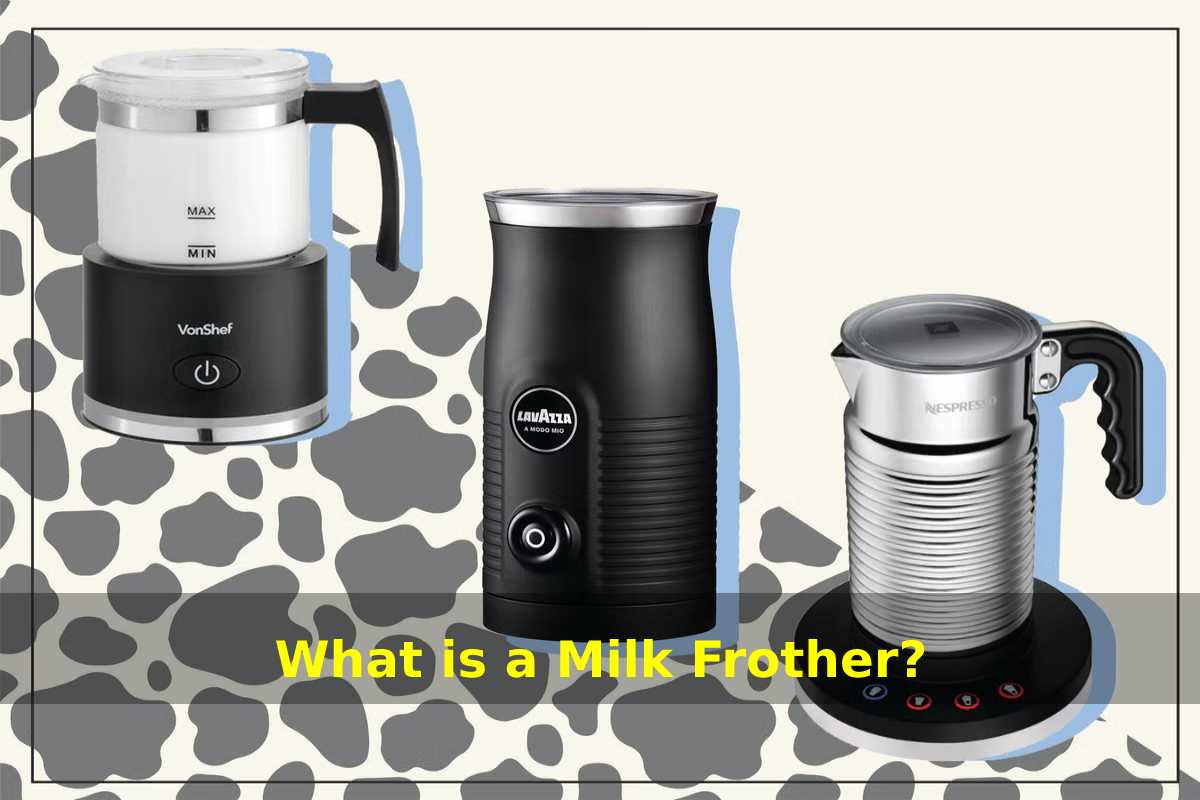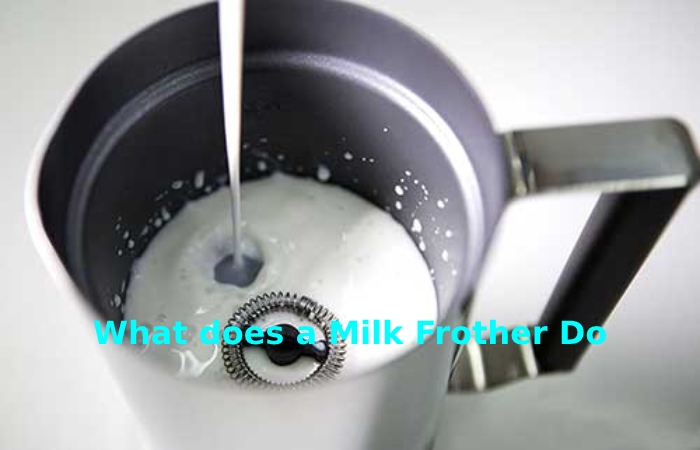
01 Apr What is a Milk Frother?
Table of Contents
Introduction
Milk frother is a cooking tool that transforms milk into thick, silky foam and microfoam. Foamy milk is usually added to coffee and espresso to make cappuccinos, lattes and more. Milk foams can be hand-fed, battery-powered or electrically powered and come in many shapes, sizes and styles, including hand steam rods, jug style and espresso machines.
Milk foams come in many shapes, sizes and styles and allow you to create a range of speciality coffee drinks in your kitchen. Learn about the different types of milk foams, from manual to automatic, and how to use them. Avoid the coffee shop and create your custom coffee drinks just like you like them with the best milk sparkler for your recipes.
What does a Milk Frother Do

Milk foams aerate the milk, creating tiny microbubbles that give the milk a light, creamy texture while increasing the total volume. Various techniques used during foaming result in different types of foam, from soft velvety textures for coffee with milk to spongy foam for cappuccino. Dependent on the type of milk frother, it can remain aerated through agitation by pumping or beating the milk vigorously or through hot steam that moves quickly.
WHAT’S THE POINT OF MILK FOAM
Foamy milk adds a pleasant flavour and texture to many espresso and coffee drinks. It can balance coffee’s bitter taste and thin surface with a slightly sweet creaminess. On the other hand, regular milk is heavier and can outweigh coffee’s consistency and robust flavour.
The own sparkling milk can remain created in a variety of textures to match your tastes or drink recipe. For example, milk with milk should be shiny and resemble wet paint when the foam ends. It will create a silky texture throughout the drink, in contrast to something like a cappuccino that features a defined, thick layer of foam floating on top.
Also Read: Google Pixel Buds Pro review
Milk Frother Vs Steamer: What’s the Difference
The main change between a milk frother and steam is the use of steam. Steamless milk foams use stirring to draw air into the milk. Some electric foam has a heating element that also heats the milk. The result is usually light, airy foam. On the other hand, a milk vapour uses hot, high-pressure steam to heat the milk and aerate it simultaneously. The foam created by smoke tends to be more okay with microbubbles that make a bright shine throughout the milk body.
Types of Milk Frothers
The most basic type of milk skimmer is a manual model that resembles a French press and requires you to pump a plunger quickly. A milk frother is a manual milk frother usually has a disk or round whisk at the end and can be electric or battery. An automatic milk frother is activated at the touch of a button and often looks like a boiler or compact cylinder with a heating element and whisk inside. Steam rods are milk foams that usually remain connected to espresso machines for an all-in-one device.
The most basic type of milk skimmer is a manual model that resembles a French press and requires you to pump a plunger quickly. A milk frother is a manual milk frother usually has a disk or round whisk at the end and can be electric or battery. An automatic milk frother is activated at the touch of a button and often looks like a boiler or compact cylinder with a heating element and whisk inside. Steam rods are milk foams that usually remain connected to espresso machines for an all-in-one device.
WHAT MILK FROTHS BEST?
A soft and creamy espresso drink is possible with many types of milk, including non-dairy plant and nut varieties. Each type of milk will bring unique flavours and textures to your latte while steaming, foaming and mixing with your favourite ingredients. However, the results will vary depending on factors such as fat and protein content, viscosity, and technique.
- Foamy whole milk: It is the ideal milk for foaming with an outstanding balance of fat, sugar and protein. Whole milk will create a thick, velvety result, but it will take a little longer to achieve a bulkier foam for beverages like coffee macchiatos and cappuccinos.
- Foamy skimmed milk: With less fat, this type of milk will quickly froth and create more giant bubbles. You can knock out too-large bubbles by hitting the pitcher after foaming.
- Foamy Milk: While you can foam and steam cream or flavoured coffee creams, the high-fat content can avoid the lighter foam needed for some espresso drinks. The cream will work best for drinks such as latte and latte.
- Sparkling almond milk: Almond milk has a higher fat content than other non-dairy alternatives. It makes it a good choice for steam and foam and will give results similar to 2% milk (between whole and skim). This is also an excellent non-dairy option for making latte art because the foam tends to be stable.
- Sparkling soy milk: Soy milk will also give a light and airy result when foamed. Use soy milk for options that require drier foam.
- Foamy oat milk: Foamy oat milk will foam creamy and slightly sweet but should remain used and consumed quickly as the bubbles formed may be less stable.
Conclusion
A milk frother is a cooking tool that transforms milk into thick, silky foam and microfoam. Foamy milk is usually added to coffee and espresso to make cappuccinos, lattes and more.


No Comments